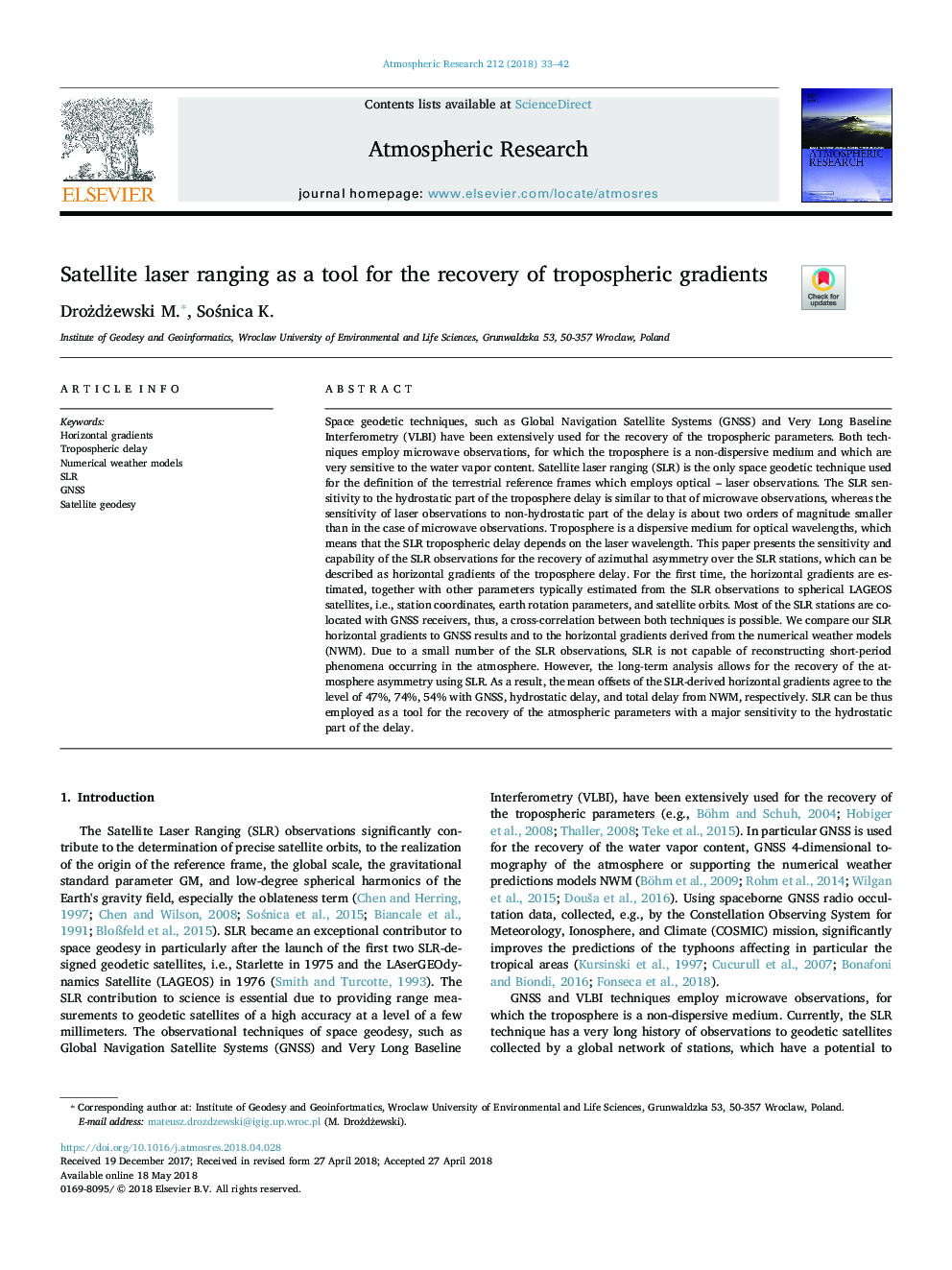| کد مقاله | کد نشریه | سال انتشار | مقاله انگلیسی | نسخه تمام متن |
|---|---|---|---|---|
| 8864494 | 1620469 | 2018 | 10 صفحه PDF | دانلود رایگان |
عنوان انگلیسی مقاله ISI
Satellite laser ranging as a tool for the recovery of tropospheric gradients
ترجمه فارسی عنوان
لیزر ماهواره ای به عنوان یک ابزار برای بازیابی شیب تروپوسفیری
دانلود مقاله + سفارش ترجمه
دانلود مقاله ISI انگلیسی
رایگان برای ایرانیان
موضوعات مرتبط
مهندسی و علوم پایه
علوم زمین و سیارات
علم هواشناسی
چکیده انگلیسی
Space geodetic techniques, such as Global Navigation Satellite Systems (GNSS) and Very Long Baseline Interferometry (VLBI) have been extensively used for the recovery of the tropospheric parameters. Both techniques employ microwave observations, for which the troposphere is a non-dispersive medium and which are very sensitive to the water vapor content. Satellite laser ranging (SLR) is the only space geodetic technique used for the definition of the terrestrial reference frames which employs optical - laser observations. The SLR sensitivity to the hydrostatic part of the troposphere delay is similar to that of microwave observations, whereas the sensitivity of laser observations to non-hydrostatic part of the delay is about two orders of magnitude smaller than in the case of microwave observations. Troposphere is a dispersive medium for optical wavelengths, which means that the SLR tropospheric delay depends on the laser wavelength. This paper presents the sensitivity and capability of the SLR observations for the recovery of azimuthal asymmetry over the SLR stations, which can be described as horizontal gradients of the troposphere delay. For the first time, the horizontal gradients are estimated, together with other parameters typically estimated from the SLR observations to spherical LAGEOS satellites, i.e., station coordinates, earth rotation parameters, and satellite orbits. Most of the SLR stations are co-located with GNSS receivers, thus, a cross-correlation between both techniques is possible. We compare our SLR horizontal gradients to GNSS results and to the horizontal gradients derived from the numerical weather models (NWM). Due to a small number of the SLR observations, SLR is not capable of reconstructing short-period phenomena occurring in the atmosphere. However, the long-term analysis allows for the recovery of the atmosphere asymmetry using SLR. As a result, the mean offsets of the SLR-derived horizontal gradients agree to the level of 47%, 74%, 54% with GNSS, hydrostatic delay, and total delay from NWM, respectively. SLR can be thus employed as a tool for the recovery of the atmospheric parameters with a major sensitivity to the hydrostatic part of the delay.
ناشر
Database: Elsevier - ScienceDirect (ساینس دایرکت)
Journal: Atmospheric Research - Volume 212, 1 November 2018, Pages 33-42
Journal: Atmospheric Research - Volume 212, 1 November 2018, Pages 33-42
نویسندگان
Drożdżewski M., SoÅnica K.,
